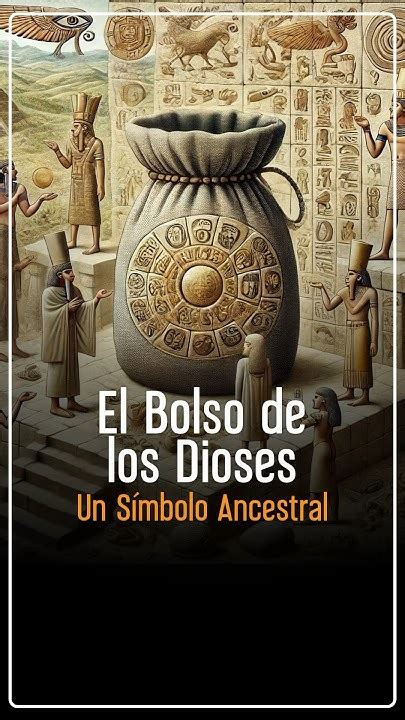

| model | ybq-3540 |
|---|---|
| brand | bgpxkn |
| weight | 7400 g |
| size | 888 * 109 * 798 |
The "El Bolso de los Dioses," or "The Bag of the Gods," is a recurring motif found in ancient iconography across various cultures, most notably in Sumerian, Mesoamerican, and Anatolian civilizations. This enigmatic symbol, resembling a handbag or a small satchel, is frequently depicted being held by divine figures, leading to numerous interpretations and speculations about its true meaning and purpose. While no definitive explanation has been universally accepted, the persistence of this imagery across vast geographical distances and time periods suggests a shared symbolic language or a common source of influence. This article will delve into the various theories surrounding the "El Bolso de los Dioses," exploring its appearances in different cultures and examining the potential meanings attributed to this intriguing artifact.
The Sumerian Origins: The Anunnaki and Their Bags
The most prominent and widely discussed appearances of the "El Bolso de los Dioses" are found in the depictions of the Anunnaki, the deities of ancient Sumerian mythology. Sumer, located in Mesopotamia (modern-day Iraq), is considered one of the earliest civilizations, flourishing from the 4th millennium BCE. Sumerian art, particularly cylinder seals and stone reliefs, often portrays these gods as humanoid figures with advanced knowledge and technology. Crucially, many of these depictions show the Anunnaki carrying a rectangular bag or basket, typically held in their hand or suspended from their wrist.
These bags are consistently depicted, suggesting they held significant importance. Several theories attempt to explain their purpose. One prominent theory suggests that the bags contained advanced technology or tools used by the Anunnaki. Proponents of the ancient astronaut theory posit that the Anunnaki were extraterrestrial beings who visited Earth and gifted humanity with knowledge and civilization. The bags, in this context, would represent the advanced technology they brought with them, perhaps tools for construction, agriculture, or even weaponry.
Another interpretation suggests that the bags represented containers for sacred knowledge or wisdom. The Sumerian gods were revered for their knowledge of the cosmos, mathematics, and other sciences. The bags could have symbolized the repository of this divine knowledge, passed down to select individuals or used for specific rituals. This interpretation ties into the concept of esoteric knowledge, hidden from the masses and revealed only to initiates.
Furthermore, some scholars believe the bags could have symbolized a portal or a means of transportation. The Sumerian myths often speak of the Anunnaki traveling between different realms. The bags, in this context, could have been devices that allowed them to traverse these dimensions or travel through space. This interpretation aligns with the idea of advanced technology capable of manipulating space and time.
Finally, a more symbolic interpretation suggests that the bags represented power, authority, or even fertility. In many ancient cultures, bags and baskets were associated with abundance and provision. The Anunnaki, as providers and rulers, might have used the bags as a symbol of their power and their ability to provide for their people. The rectangular shape could also have had a symbolic meaning related to the earth, agriculture, or stability.
The Mesoamerican Connection: Quetzalcoatl and the Bag
The "El Bolso de los Dioses" is not limited to the ancient Near East. Similar depictions appear in Mesoamerican cultures, particularly in the iconography of the Olmecs, Maya, and Aztecs. One of the most prominent figures associated with the bag in Mesoamerica is Quetzalcoatl, the feathered serpent god.
Quetzalcoatl, a central figure in Mesoamerican mythology, is often depicted holding a bag that closely resembles the ones found in Sumerian art. He was revered as a bringer of knowledge, civilization, and agriculture. Like the Anunnaki, Quetzalcoatl is sometimes associated with the introduction of advanced technologies and cultural practices.el bolso de los dioses wikipedia
The bag held by Quetzalcoatl is often interpreted as a container for seeds, representing fertility and the gift of agriculture. This interpretation aligns with Quetzalcoatl's role as a benefactor of humanity, providing them with the means to sustain themselves. It also connects the symbol to the cycle of life, death, and rebirth, which was central to Mesoamerican cosmology.
Another interpretation suggests that the bag held by Quetzalcoatl represented sacred objects or tools used in rituals. The Mesoamerican cultures were known for their elaborate ceremonies and religious practices. The bag could have contained instruments for divination, healing, or other sacred activities. This interpretation emphasizes the spiritual and ritualistic aspects of the symbol.
The presence of the bag in Mesoamerican iconography raises intriguing questions about cultural exchange or a shared symbolic language. While direct contact between Sumer and Mesoamerica is highly unlikely given the vast geographical distance and technological limitations of the time, some theories suggest a common origin or influence from a lost civilization. This idea, while controversial, highlights the enduring mystery surrounding the "El Bolso de los Dioses."
Göbekli Tepe: The Anatolian Enigma
Further complicating the mystery of the "El Bolso de los Dioses" is its appearance at Göbekli Tepe, an archaeological site in southeastern Turkey dating back to the Pre-Pottery Neolithic period (around 9500 BCE). Göbekli Tepe is considered one of the oldest known religious structures in the world, predating the invention of agriculture and pottery.
Montres Hublot Classic Fusion Discover fashion pre-loved Saint Laurent, Luxury and Fashion Designer Bags at hand! Shop key designer brands at up to 70% off RRP . SAINT LAURENT Leather clutch bag. £400 £213. Direct Shipping. . Where to Buy Saint Laurent Women's Bags? Vestiaire Collective is the perfect choice for fashion lovers looking for top quality Saint Laurent ..
Hublot sang bleu ceramic watch $506.25.
Hublot watch price Navegue pela coleção de HANDBAGS hoje mesmo e adquira seus produtos online no site oficial da SAINT LAURENT..